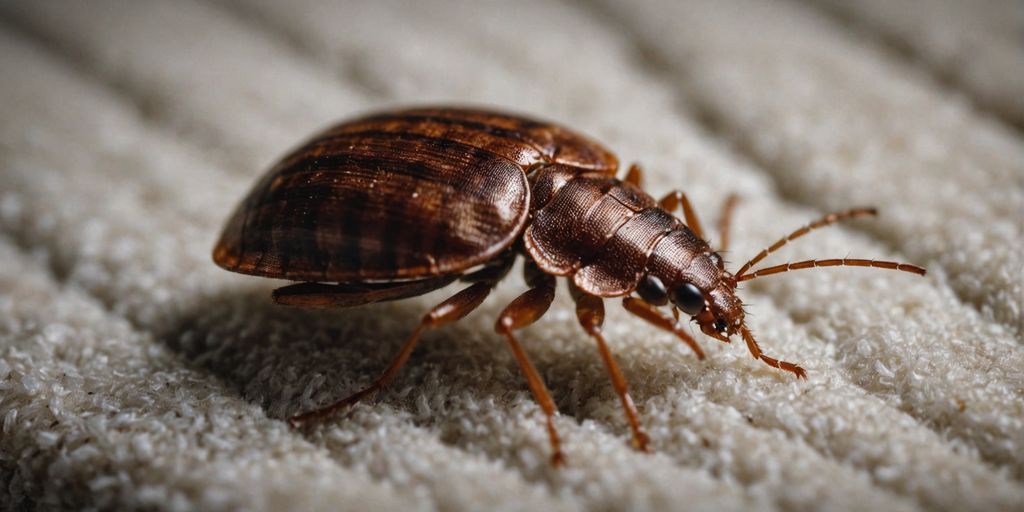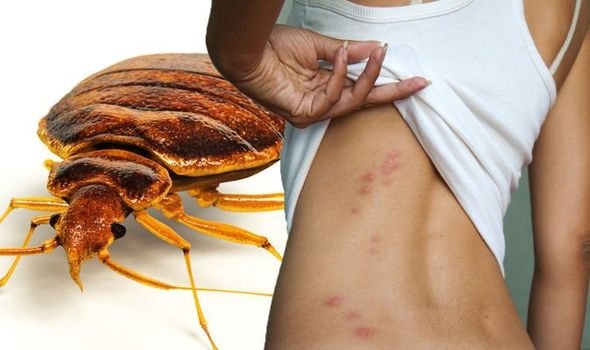Understanding Bed Pest Treatment and Its Role in Comprehensive Parasite Control
The prevalence of bed insects in various settings has highlighted the necessity of recognizing efficient treatment methods within the wider context of detailed bug control. As problems pose significant health threats and can interfere with everyday life, discovering the subtleties of reliable therapy and the importance of expert intervention ends up being paramount.

Introduction of Bed Pests
Bed pests, clinically called Cimex lectularius, have actually become a substantial bug issue in metropolitan and suburban environments worldwide. These nighttime insects mainly prey on human blood, causing discomfort and distress to those affected. Adult bed insects are reddish-brown, approximately 4-5 mm in size, and possess level, oval bodies that allow them to conceal conveniently in tiny crevices, such as cushion seams, bed frameworks, and furniture.
Reproduction occurs rapidly, with females disabling to five eggs each day, adding to the speedy acceleration of problems. Bed insects are not recognized to send diseases, but their attacks can result in sensitive responses and additional infections from scratching. The pests are highly resistant, surviving for months without feeding, which complicates removal efforts.
Their resurgence in the last few years can be credited to greater worldwide travel, the rise of used furnishings markets, and resistance to traditional insecticides. Effective monitoring needs a combination of sanitation, surveillance, and targeted therapy methods. Recognizing the biology and behavior of bed insects is essential for establishing efficient control methods and decreasing their effect on human health and wellness.
Indications of Infestation
Acknowledging the signs of a bed insect infestation is crucial for punctual treatment and control. Common indicators consist of small reddish-brown spots on bed linen or furnishings, which are typically the outcome of smashed bed bugs.
An additional indicator is the existence of shed exoskeletons, as bed bugs molt throughout their life cycle. An unpleasant, moldy smell can originate from greatly plagued areas, associated to the scent glands of these parasites. Bed pests are nocturnal, so residents may discover attacks on exposed skin after resting, usually defined by red, scratchy welts organized in a line or collection.
Last but not least, bed insects can hide in different areas, including mattress joints, box springs, bed structures, and even behind wallpaper or electrical outlets. Normal evaluations of these locations can aid in early detection. By understanding and identifying these signs, people can take necessary activities to mitigate the issue before it intensifies.

Treatment Techniques
Successfully dealing with a bed insect invasion needs a multi-faceted method that combines different therapy methods tailored to the intensity of the scenario. The primary methods consist of chemical treatments, warmth therapies, and integrated parasite management (IPM) methods.
Chemical treatments typically include the application of insecticides specifically made to target bed bugs. These can be applied in numerous forms, such as sprays, dusts, or aerosols. It is vital to select items that are efficient and risk-free, complying with the manufacturer's guidelines carefully to lessen dangers.
Heat therapies, on the other hand, utilize high temperatures to eliminate bed bugs at all life stages. This method involves increasing the temperature of plagued locations to a level deadly to bed bugs, normally around 120 ° F(49 ° C )or higher, for a sustained period.
Integrated Bug Management (IPM) integrates both chemical and non-chemical methods. It stresses detailed examinations, correct sanitation, and keeping an eye on to ensure lasting monitoring of bed insect populaces. By using these therapy methods in combination, property owners can properly remove bed bugs while minimizing the danger of reinfestation.
Precautionary Procedures
(Pest Control Washington DC)Carrying out effective safety nets is essential for minimizing the risk of a bed insect problem. These insects are well-known for their capacity to hitch an experience on individual belongings, making caution essential. Frequently examining second-hand furnishings and apparel prior to bringing them right into your home can substantially reduce the possibility of a problem.
Motivating a clutter-free environment is also vital, as it eliminates possible concealing places for bed bugs. Vacuuming regularly, especially in areas such as bedrooms and living areas, can help record any roaming bugs or eggs, while securing vacuum cleaner bags securely prevents their retreat.
In addition, making use of safety covers for mattresses and box springtimes can produce a barrier that prevents bed bugs from resolving in these areas. When traveling, examine hotel spaces, concentrating on the seams of cushions and behind head boards, and keep baggage off the floor.
Relevance of Expert Help
(Bed Bug Treatment)
When managing a bed pest infestation, seeking professional help is commonly essential to make sure comprehensive and effective therapy - Bed bug Exterminator. Bed insects are notoriously testing to remove because of their capacity to hide in tiny crevices and their quick site recreation price. Experts possess the proficiency and specialized devices needed to identify the level of the invasion and implement a targeted strategy
do it yourself methods might provide temporary relief; however, they usually fall short to resolve the origin of the problem, permitting bed bugs to reappear. Specialist parasite control services make use of a mix of chemical treatments, warm applications, and integrated insect monitoring approaches customized to the certain situation. This complex method not only eliminates existing insects yet also minimizes the threat of future invasions.
Additionally, professionals can provide beneficial advice on safety nets, helping homeowners comprehend how to prevent future encounters. Engaging a certified pest control professional additionally ensures conformity with regional guidelines worrying chemical use, securing both health and wellness and the setting. Finally, professional help is essential for effective bed pest therapy, providing both instant alleviation and long-lasting remedies to restore convenience in affected rooms.
Final Thought
In final thought, reliable bed insect therapy necessitates a detailed method that integrates both chemical and non-chemical approaches. By adopting a systematic method, homeowners can efficiently shield their living areas and lower the connected health threats of bed insect infestations.